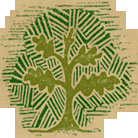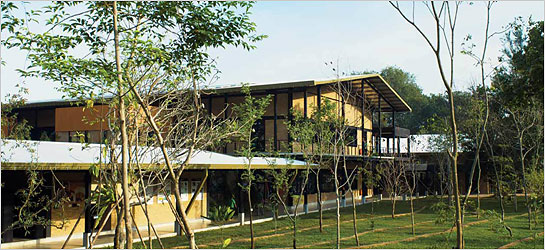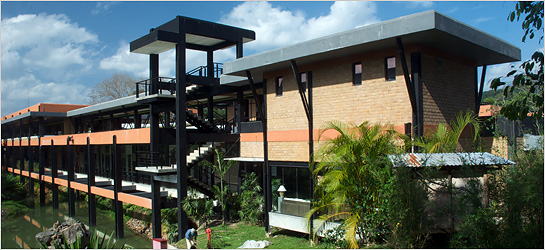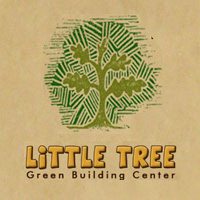
Little Tree Bali - Green Building Centre
telpon
Customer Service
+62 (0) 81139605497
Jika ada kebutuhan khusus, silakan kontak staf kami langsung.
toserba
Sekarang buka dari hari Senin sampai hari Sabtu :
8:00-17:00
Tropical green building factory in Sri Lanka
MAS Intimates Thurulie, Sri Lanka, claims to be the world’s first clothing factory powered solely by carbon neutral sources.
MAS Intimates Thurulie, Sri Lanka, claims to be the world’s first clothing factory powered solely by carbon neutral sources. But that is only part of what makes this factory, inspired by traditional Sri Lankan architecture and nestled amid lush greenery, an impressive example of tropical green design.

The building was designed to be an iconic model for green manufacturing, and to set new standards for design, construction, and operation. In conceptualizing the project, the design team applied a three-point philosophy of respect for the site, respect for users and respect for ecosystems. The result is a highly efficient building that uses half the water of comparable factories.
Passive coolingThe building’s cooling is achieved by passive design and secondarily by active systems. The massing of the building volumes and the positioning and sizing of windows permit daylight to enter as natural illumination without causing substantial heat gain. Heat trapped by the roofs is controlled by a combination of green roofs, photovoltaic roofs, and cool roofs. As a result, the roofs that are covered with turf and plants absorb heat but do not transmit it into the building. The photovoltaic roof covers 200 m2 of the building with solar panels.
To reduce the amount of heat emanating from the building into the surrounding area, shading has been added wherever possible: by covering parking areas, by using lighter, reflective paving around the building instead of dark, heat-absorbent paving, and by shading courtyards.
Indoor thermal comfortOffices are ventilated and cooled by evaporative cooling units. These units draw in fresh air, filter it and add moisture to lower the dry-bulb temperature. Indoor air is not recirculated, but extracted by suitably-sized exhaust fans to ensure effective moisture and heat removal. Year round, the indoor dry-bulb temperature is up to 3C cooler than the outdoors, and the indoor relative humidity about 10% higher than the outdoors.
Walls are made of compressed stabilized-earth block manufactured 40 km from the site.

Rainwater that falls on the cool roofs is collected and used for flushing toilets. Storage tanks and toilets are gravity fed, eliminating the need for pumps. When the tanks run dry during a drought, water is sourced from the park’s system. When the tanks become full after prolonged rain, the overflow is piped underground into the pond. Rainwater covers 90% of flushing needs.
Wastewater is treated on site using an anaerobic plant, with purified water fed into a retention pond.
Clean energyThe plant’s two primary energy sources are photovoltaic and hydroelectric (90% of the plant’s power needs).
Water is preheated in tubes on the roof and then heated in conventional boilers. Methane gas from the sewage-treatment plant is collected for firing stoves and ovens in the kitchen.
Source (photos and text): Holcim Foundation for Sustainable Construction

